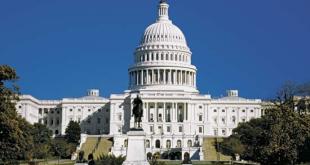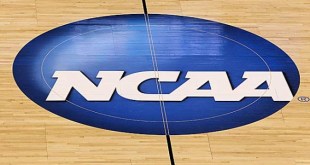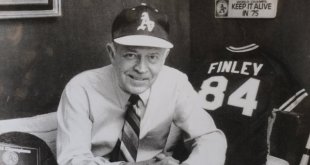Part I – The Impact of the Qualifying Offer:
With five players who declined Qualifying Offers still unsigned as of MLK Day, there is no debate that the Qualifying Offer has cooled the hot stove down to a steady simmer. When Major League Baseball adopted the Qualifying Offer in 2012 under the new Collective Bargaining Agreement (“CBA”) such drastic change could not have been anticipated. Previously teams had to offer their players salary arbitration to receive free compensatory draft picks. A team’s level of compensation was dependent upon whether that player was classified as a Type A or Type B free agent based on his performance the previous season. Now clubs wishing to protect their investment in an impending free agent must tender that player a 1-year contract worth the average value of the top 125 existing salaries for the upcoming season – the value of a Qualifying Offer for the 2014 season is $14.1 million.
Under the old system of free agent compensation draft choices were transferred from club to club like candy. Almost every attractive free agent required losing a draft pick under the Arbitration Model. In the three off-seasons preceding the new CBA – 2009-2011 – there were 24, 23, and 35 free agents tied to draft pick compensation. In 2012 the rules regarding draft pick compensation were modified with elements of both the old and new systems. While arbitration endured with 37 players receiving offers, 13 out of 14 eligible Type A players received an offer with only 7 of those costing their new team a draft selection. Only nine players received a Qualifying Offer last year compared to thirteen this year, and not one Qualifying Offer was accepted in either year.
In the preceding four off-seasons before the current free agent compensation model took effect, an average of four additional players – or 13 each year – were tied to first round draft pick compensation. Compared to the years immediately prior to the 2013 offseason, the percentage of players tied to free agent compensation signing contracts of at least 3-years was well below the league norm. Under the Arbitration Model the average percentage of such players signing multi-year deals was 66% – 10% higher than in 2013. Examining only the normal free agency period, the percentage of players tied to free agent compensation who signed multi-year deals in 2013 dropped precipitously to 33%, as Kyle Lohse did not sign until the week before Opening Day and Michael Bourn remained unsigned until after Spring Training began. If the 2-year $45 million contract Manny Ramirez signed with Los Angeles Dodgers is considered a multi-year deal (it isn’t in the chart below) then the percentage of multi-year deals signed in the 2009 off-season – 53% – is more inline with the 2013 free agent period. Classifying Ramirez’s contract in this manner is not outlandish because the total value of the deal nearly exceeds the 4-year deal Michael Bourn received from the Indians, and it far surpasses the total dollars contained in the 3-year contract the Brewers gave Kyle Lohse. Despite this mere percentage point differential, the total number of multi-year deals handed out in 2009 to free agents costing their new team a draft selection almost equals the total number of players who received a Qualifying Offer for the 2013 season.
|
Off-Season Year |
# of Players Tied to First Round Compensation |
# of Multi-Year Contracts* |
% of Players Signing Multi-Year Deals
|
# of Multi-Year Deals Above an AAV Threshold** |
|
2009 |
15 |
7 |
47% |
5 |
|
2010 |
10 |
7 |
70% |
3 |
|
2011 |
14 |
11 |
79% |
7 |
|
2012 |
13 |
9 |
69% |
5 |
|
2013 |
9 |
5 |
56% |
3 |
| *Multi-Year Contract = Minimum 3 years**AAV = Average Annual Value of a Multi-Year Contract greater than $12.3 MM ($1 MM less than the 2013 Qualifying Offer) | ||||
The reduced number of players tied to free agent compensation, compared to prior off-seasons, enabled many clubs to participate in free agency without penalty. With franchises becoming increasingly cost conscious and having a greater appreciation for the economic value of players before they qualify for free agency, the emphasis placed on the draft has intensified in recent years. These developments have had an impact. The large number of free agents not tethered to compensation has allowed clubs to improve their Major League rosters without sacrificing the ability to add depth to their minor league systems through the draft. In effect clubs can now pay attention to the non-monetary cost of signing specific free agents.
Under the new CBA clubs losing draft picks for signing free agents also lose advantages in the draft. The newly established signing bonus pool limits the money clubs can spend on signing bonuses for their draft picks. Although only applicable to the first 10 rounds, teams are permitted to spend a predetermined amount based on the total number and placement of their selections. When teams surrender a draft pick for signing a free agent who received a Qualifying Offer, they not only lose the pick but also the signing bonus allotment that accompanied that pick. This prevents teams from affording, and hence selecting, players who dropped due to bonus demands. It also limits teams’ flexibility to efficiently allocate a larger bonus pool to entice players to sign without facing the extreme consequences of exceeding their pool, including loss of future draft picks and financial penalties. Thus the addition of the signing bonus pool further affects the calculus of signing players linked to free agent compensation.
The arbitration model prevented franchises interested in improving their big league clubs by signing a marquee or otherwise attractive free agent from placing too much value on high round draft picks. If an emphasis was placed on talent acquisition through the draft under the old system then making even a small splash in free agency was difficult. However, two other changes occurred this past off-season. First, players acquired after Opening Day are ineligible to receive a Qualifying Offer. Second, linking the monetary value of a Qualifying Offer to a set amount each season eliminates positional bias and the effect of previous performance inherent in salary arbitration. Arbitration presented clubs with the opportunity to argue that players’ performances were deserving of an offer best characterized as team friendly while players tried to demonstrate just the opposite – their performances were inline with the best and highest paid. Baseball’s final offer arbitration model is set up to encourage settlement, often resulting in compromise near the midpoint between the two salary demands and close to the player’s actual value.
Qualifying Offers remove this fluid system from the equation. Now, clubs value players below, at, or above the Qualifying Offer and, generally, those assessed below it are not tendered such an offer. These two factors create a much deeper free agent talent pool devoid of any compensation. Consequently the cost and demand of players not tied to free agent compensation rises, while players declining their Qualifying Offers experience a decline in their demand and, accordingly, their value. For example, compare players receiving a Qualifying Offer against uninhibited players in the same positional group.
|
Centerfielders – 2012
|
||||||
|
PA |
AVG |
OBP |
OPS |
SB |
WAR |
|
| Bourn |
703 |
.274 |
.348 |
.739 |
42 |
6.0 |
| Pagan |
659 |
.288 |
.338 |
.778 |
29 |
4.1 |
| Victorino |
666 |
.255 |
.321 |
.704 |
39 |
2.6 |
First – centerfielders. Michael Bourn received a Qualifying Offer from the Braves but ultimately signed a 4-year $48 million contract with the Indians right before Spring Training started, while Angel Pagan re-signed with the Giants for 4-years at $40 million and Shane Victorino signed a 3-year $39 million deal with the Red Sox. Bourn is looked at as one of the premier leadoff hitters reaching base and stealing bases with greater success. He was worth nearly 2 more wins in 2012 compared to Pagan and 3.5 compared to Victorino. Yet the average annual value of his contract is less than Shane Victorino’s, while the total guaranteed money is only 8 and 9 million more respectively than the other players’ contracts.
|
Right-Handed Starting Pitchers – 2012
|
|||||||
|
IP |
ERA |
WHIP |
SO/9 |
BB/9 |
HR/9 |
WAR |
|
| Lohse |
211 |
2.86 |
1.09 |
6.1 |
1.6 |
0.8 |
4.3 |
| Jackson |
189.2 |
4.03 |
1.22 |
8.0 |
2.8 |
1.1 |
2.0 |
| Dempster |
173 |
3.38 |
1.20 |
8.0 |
2.7 |
1.0 |
3.8 |
Second – right-handed starting pitchers. Kyle Lohse received a Qualifying Offer from the Cardinals but, as previously mentioned, did not sign his 3-year $33 million contract with the Brewers until the week before Opening Day. Edwin Jackson signed with the Cubs for 4-years at $52 million, and Ryan Dempster signed a 2-year $26.5 million deal with the Red Sox. Not only did Kyle Lohse post significantly more innings, he also had a drastically lower ERA and WHIP. Lohse demonstrated greater control by walking more than a batter less per nine innings compared to Dempster and Jackson while surrendering fewer homeruns. He was worth between half a win and two wins more during the 2012 season. However, he has the lowest average annual value of the three pitchers and will earn only $6.5 million more than Ryan Dempster over the life of their current contracts and $19 million less than Edwin Jackson.
The single common denominator linking Kyle Lohse and Michael Bourn is the Qualifying Offer extended by their previous clubs. The chart below shows the impact the Qualifying Offer has had on free agency. Consistently the length and dollar amounts of free agent contracts negotiated under the arbitration model are skewed greatly in favor of players tied to first round draft pick compensation. In the 4-year period from 2009 through 2012 players tied to first round draft pick compensation received nearly four times the guaranteed money and twice the contract length of other players tied to lesser or no free agent compensation. However with the evolution of the Qualifying Offer under the new CBA this trend has been turned on its head. Under the new model of free agent compensation the average contract terms for players tied to free agent compensation is equal to, if not surpassed by, players uninhibited by draft pick penalties. The short-term deals signed by Adam LaRoche, Hiroki Kuroda, David Ortiz and Rafael Soriano can all be attributed in part to the Qualifying Offer, which is proving to serve as a limiting factor for free movement by players on the open market. Thus, not only has the non-monetary cost for acquiring players tendered a Qualifying Offer increased but also the demand for them has decreased, lowering their cost on the open market.
|
2013 |
||
|
QO |
NON-QO |
|
| # of Players |
9 |
9 |
| Total Guaranteed Dollars Allocated (MM) |
428.25 |
436.5 |
| Total Years Allocated |
28 |
28 |
| Average Annual Value (MM) |
15.3 |
15.6 |
| Avg. Contract Parameters |
48 MM, 3 yrs |
49 MM, 3 yrs |
|
2012 |
2011 |
|||
|
Type A |
Non-Type A |
Type A |
Non-Type A |
|
| # of Players |
7 |
7 |
14 |
14 |
| Total Guaranteed Dollars Allocated (MM) |
733.1 |
208.5 |
729.25 |
153.5 |
| Total Years Allocated |
38 |
19 |
51 |
29 |
| Average Annual Value (MM) |
19.3 |
11 |
14.3 |
5.3 |
| Avg. Contract Parameters |
96 MM, 5 yrs |
33 MM, 3 yrs |
57 MM, 4 yrs |
11 MM, 2 yrs |
|
2010 |
2009 |
|||
|
Type A |
Non-Type A |
Type A |
Non-Type A |
|
| # of Players |
10 |
10 |
14 |
14 |
| Total Guaranteed Dollars Allocated (MM) |
$365.1 |
$106.7 |
$670.6 |
$151.8 |
| Total Years Allocated |
30 |
19 |
43 |
21 |
| Average Annual Value (MM) |
$12.2 |
$5.6 |
$15.6 |
$7.2 |
| Avg. Contract Parameters |
37 MM, 3 yrs |
11 MM, 2 yrs |
48 MM, 3 yrs |
14 MM, 2 yrs |
 The Sports Esquires Putting Sports on Trial
The Sports Esquires Putting Sports on Trial





One comment
Pingback: The Impact of the Qualifying Offer this Off-Season | The Sports Esquires